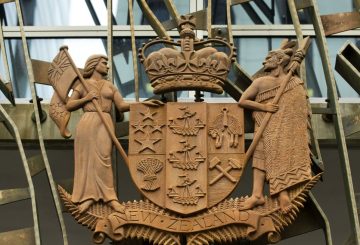1800년대 중반, 뉴질랜드의 어머니들은 초창기 카메라의 긴 노출 시간 때문에 아기들과 함께 사진을 찍을 수 있는 창의적인 방법을 찾아야 했습니다.책 편집자 숀 히긴스 (Shaun Higgins) 에 따르면 이 여성들은 ‘숨겨진 엄마’로 불리게 되었습니다.그들은 의자 뒤나 천 아래에 숨어 사진을 찍는 동안 아이들을 받쳐주곤 했는데, 이는 최대 45초까지 걸릴 수 있었습니다.
히긴스의 최신 저서인 A Different Light: 아오테아로아의 첫 번째 사진에는 표지에 ‘숨겨진 어머니’의 예가 실려 있습니다.캐서린 해먼드와 공동 편집한 이 책에는 오클랜드 박물관, 호켄 컬렉션, 알렉산더 턴불 도서관 등 세 곳의 주요 연구 도서관에서 찍은 사진이 실려 있다.다양한 초상화와 풍경을 통해 뉴질랜드 식민지 시대를 엿볼 수 있습니다.
사진은 프랑스에서 발명된 지 약 100년이 지난 1848년에 아오테아로아에 도착했습니다.아오테아로아에서 가장 먼저 현존하는 사진은 1852년에 찍은 에드워드 캐치풀이라는 남자의 초상화입니다.히긴스는 사람들이 초기 사진에서 진지해 보이는 경우가 많다고 말했습니다. 왜냐하면 사람들은 오랫동안 가만히 앉아 있어야 했고, 그 당시에는 치과 치료가 그다지 좋지 않았기 때문입니다.
초기 사진작가들은 카메라, 삼각대, 휴대용 암실을 포함한 대형 키트를 들고 다녀야 했습니다.네거티브 사진을 즉시 처리해야 했기 때문입니다.책에 실린 핑크 앤 화이트 테라스의 사진 한 장은 50cm 크기의 접시에 담았습니다.
마오리 초상화는 인기가 많았지만 많은 사진작가들이 마오리 사진을 이용해 이익을 얻었다.그들은 익명의 간호사들의 사진을 찍어 트레이딩 카드로 대량 생산하곤 했다.시터들은 일한 시간에 대한 보수를 받지 못했어요.자신의 이미지를 전 세계에 널리 알리기 위해 적극적으로 사진작가를 찾던 Kīngi Tāwhiao와는 대조적입니다.




























































